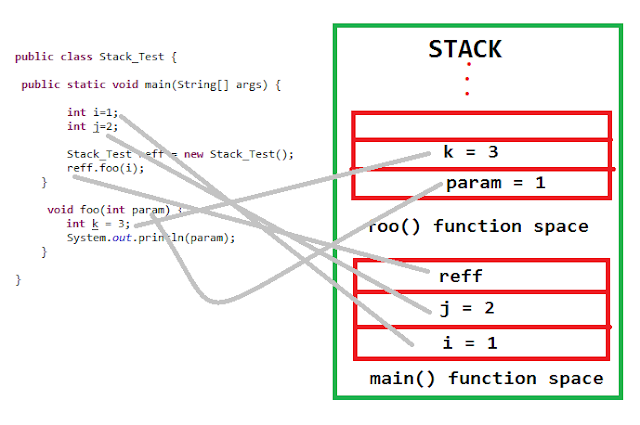What is JVM, JDK and JRE in Java?
What is JVM?
Java Virtual machine (JVM) is the virtual machine that
runs the Java bytecodes. You get this bytecode by compiling the .java files
into .class files. .class files contain
the bytecodes understood by the JVM.
In the real world, JVM is a specification that provides a runtime environment in which Java bytecode can be executed. Different vendors provide different implementations of this specification. For example, this wiki page lists down different JVM implementations.
Most popular implementation of JVM is Hotspot which is
owned and provided by Oracle Corporation. (Previously
by Sun Microsystems, Inc.).
JVM delivers the optimal performance for Java applications using
many advanced techniques, incorporating a state-of-the-art memory model, garbage collector,
and adaptive
optimizer.
JVM comes in two different flavors – client and server. Although
the Server and the Client VMs are similar, the Server VM has been specially
tuned to maximize peak operating speed. It is intended for executing
long-running server applications, which need the fastest possible operating
speed more than a fast start-up time or smaller runtime memory footprint.
Developers can choose which system they want by specifying -client or -server.The JVM is called virtual because
it provides a machine interface that does not depend on the underlying
operating system and machine hardware architecture. This independence from
hardware and the operating system is a cornerstone of the
write-once-run-anywhere value of Java programs.
What is JRE?
The Java
Runtime Environment (JRE) is a software package which
bundles the libraries (jars) and the Java Virtual Machine, and other components
to run applications written in the Java. JVM is just a part of JRE
distributions.
To execute any Java application, you need JRE installed in the
machine. It’s minimum requirement to execute Java applications on any machine.
JRE bundles the following components –
1.
DLL files used by the Java HotSpot Client Virtual Machine.
2.
DLL files used by the Java HotSpot Server Virtual Machine.
3.
Code libraries, property
settings, and resource
files used by the Java runtime environment. e.g. rt.jar and charsets.jar.
4.
Java extension
files such as localedata.jar.
5.
Contains files used for security management. These include
the security
policy (java.policy) and security properties (java.security)
files.
6.
Jar files containing support classes for applets.
7.
Contains TrueType
font files for use by the platform.
JREs can be downloaded as part of JDKs or you can download them
separately. JREs are platform dependent. It means that based on the type of
machine (OS and architecture), you will have to select the JRE bundle to import
and install.
For example, you cannot install a 64-bit JRE
distribution on 32-bit machine.
Similarly, JRE distribution for Windows will
not work in Linux;
and vice-versa.
What is JDK?
JDK is a superset of JRE. JDK contains everything that JRE has
along with development tools for developing, debugging, and monitoring Java
applications. You need JDK when you need to develop Java applications.
Few important components shipped with JDKs are as follows:
·
appletviewer – this tool can be used to run and debug Java applets
without a web browser
·
apt – the annotation-processing tool
·
extcheck – a utility that detects JAR file conflicts
·
javadoc – the documentation generator, which automatically
generates documentation from source code comments
·
jar – the archiver, which packages related class libraries
into a single JAR file. This tool also helps manage JAR files
·
jarsigner – the jar signing and verification tool
·
javap – the class file disassembler
·
javaws – the Java Web Start launcher for JNLP applications
·
JConsole – Java Monitoring and Management Console
·
jhat – Java Heap Analysis Tool
·
jrunscript – Java command-line script shell
·
jstack – utility that prints Java stack traces of Java threads
·
keytool – tool for manipulating the keystore
·
policytool – the policy creation and management tool
·
xjc – Part of the Java API for XML Binding (JAXB) API. It
accepts an XML schema and generates Java classes




Comments
Post a Comment